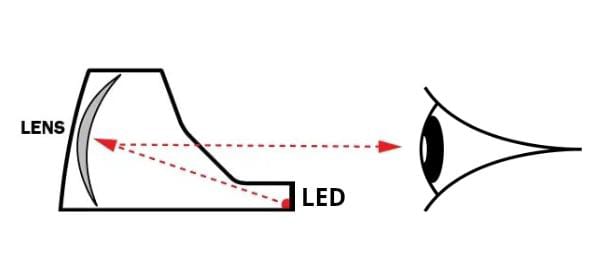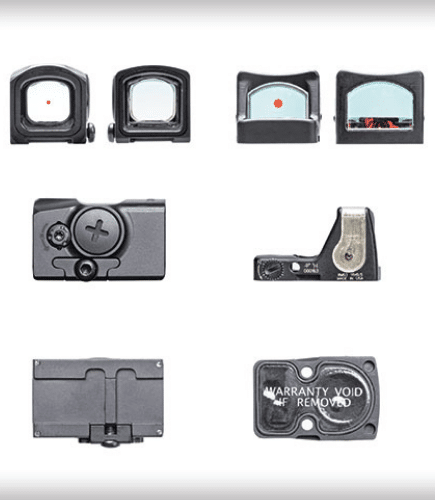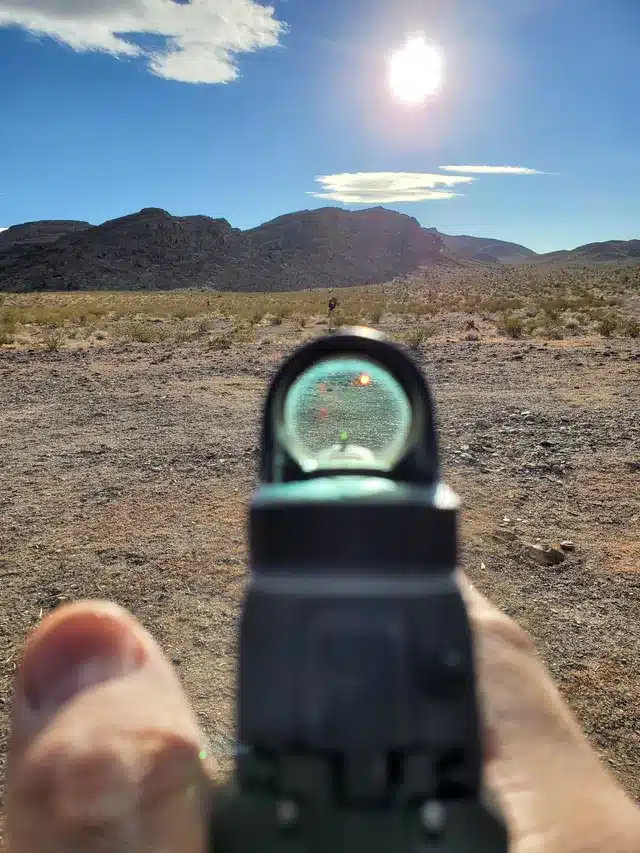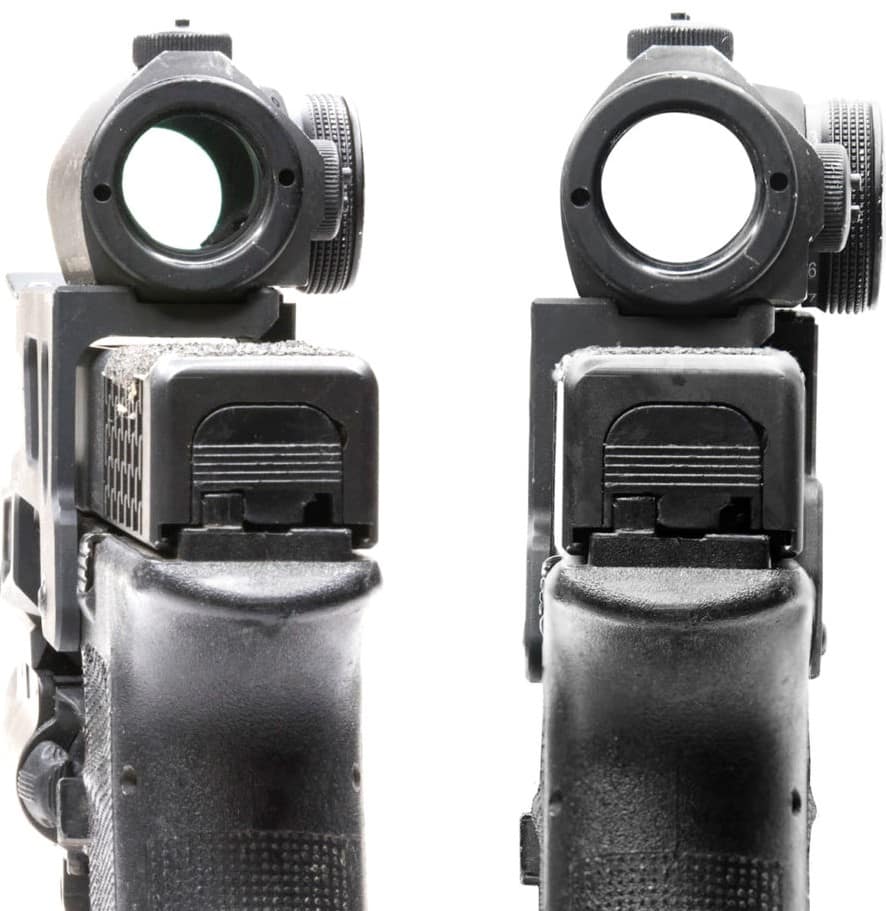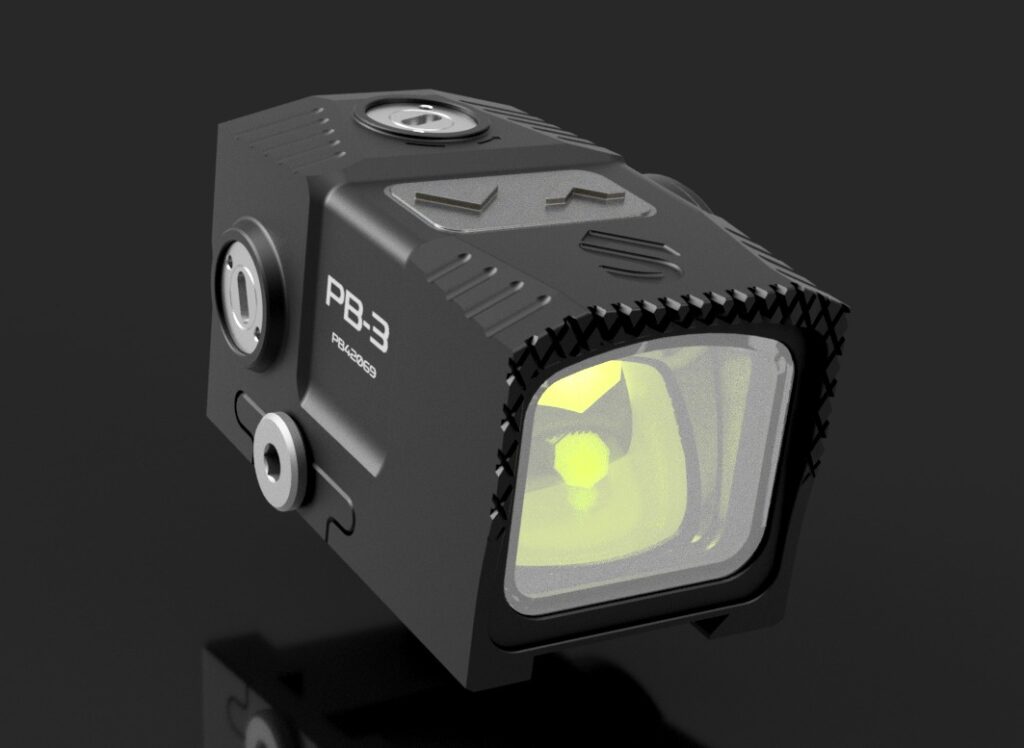Reflex-style optics can be categorized based on whether or not an emitter is enclosed & only really require one objective plane, upon which to reflect a reticle. However, there are also designs with more than one objective plane, which enclose the emitter.
Open-emitter reflex-style optics (OE) usually only have one objective, while closed-emitter reflex-style optics (CE), typically, have more than one. More plainly, an OE typically only has one surface, upon which a reticle is reflected. A CE, on the other hand, usually has more than one objective plane implemented, either directly or indirectly, to enclose the emitter. While objective planes can be extremely complex in magnified optics, most reflex-style optics have a very simple, non-magnified objective plane or planes.
OE’s typically have a smaller footprint & are more compact than their closed counterparts. The smaller an optic’s footprint, the less obstructive it will be, ultimately, when looking through the objective.
The benefit of smaller open-emitter designs, sadly, ends there. The disadvantages of an exposed emitter coalesce, ultimately, into a critical impact on reliability.
By design, OE’s leave an emitter, the component that actually projects the reticle, open & exposed. This means, one of the most vital components, the emitter, is constantly exposed to all the various foreign dirt, debris, liquid, moisture, humidity, finger crust, Cheeto dust & fun dip spillage an optic may encounter during an average, completely normal day.
While the aforementioned caution is in partial jest, any sort of rain or drizzle seriously does impact the efficiency of an open-emitter reflex-style optic. Oftentimes, in bright sunlight, an open-emitter can even reflect lint onto the objective plane, along with the reticle.
CE’s typically have two or more objective planes, which inherently make them larger & heavier than their open counterparts. Historically, technological limitations, for the most part, have confined the use of closed-emitter reflex style optics to firearms larger than a typical handgun, i.e. an AR-15 or PCC.
However, innovation now gives manufacturers the ability to design closed-emitter optics small enough to mount on a typical handgun. The major benefit of a closed-emitter optic, which are typically nitrogen-sealed, is that the emitter is now protected from the aforementioned threats posed by an average, completely normal day.
In addition, when the emitter is enclosed, sealed & purged, any sort of prolonged exposure to fog & rain, among other elements, have little to no impact on the optic’s effectiveness. The downside, however, is inherent; a larger footprint is more obstructive when looking through the objective.
The challenge in manufacturing a closed-emitter handgun optic is balancing the smallest footprint with the largest objective plane possible, which is somewhat oxymoronic.
Clearly, the larger a window is, the larger the overall footprint will be. Ideally, an optic with a 4000 mm objective plane would be the ultimate in unobstructed viewing. However, it is impossible to mount something that huge to anything other than a satellite-controlled laser beam.
This explains why, although objectively obsolete, some still prefer open-emitter, reflex-style optics due to their smaller, lighter footprints & historically cleaner objective view.
As technology allows manufacturing to fabricate larger windows inside smaller housings, however, the superior sight picture most open-emitter optics afford may finally be outweighed by the critical inherent disadvantage of their exposed-emitter design.
Meaning, as enclosed-emitter micro reflex-style optics continue to further enlarge windows, while shrinking housings, the objective sight view between the two styles will be so similar, there will no longer be a reason to use an open-emitter over a closed.
Even more simply put; the reason open-emitters were ever utilized is because the technology to make an enclosed-emitter optic small enough to realistically mount to the slide of a handgun didn’t exist…
Now, it does.

